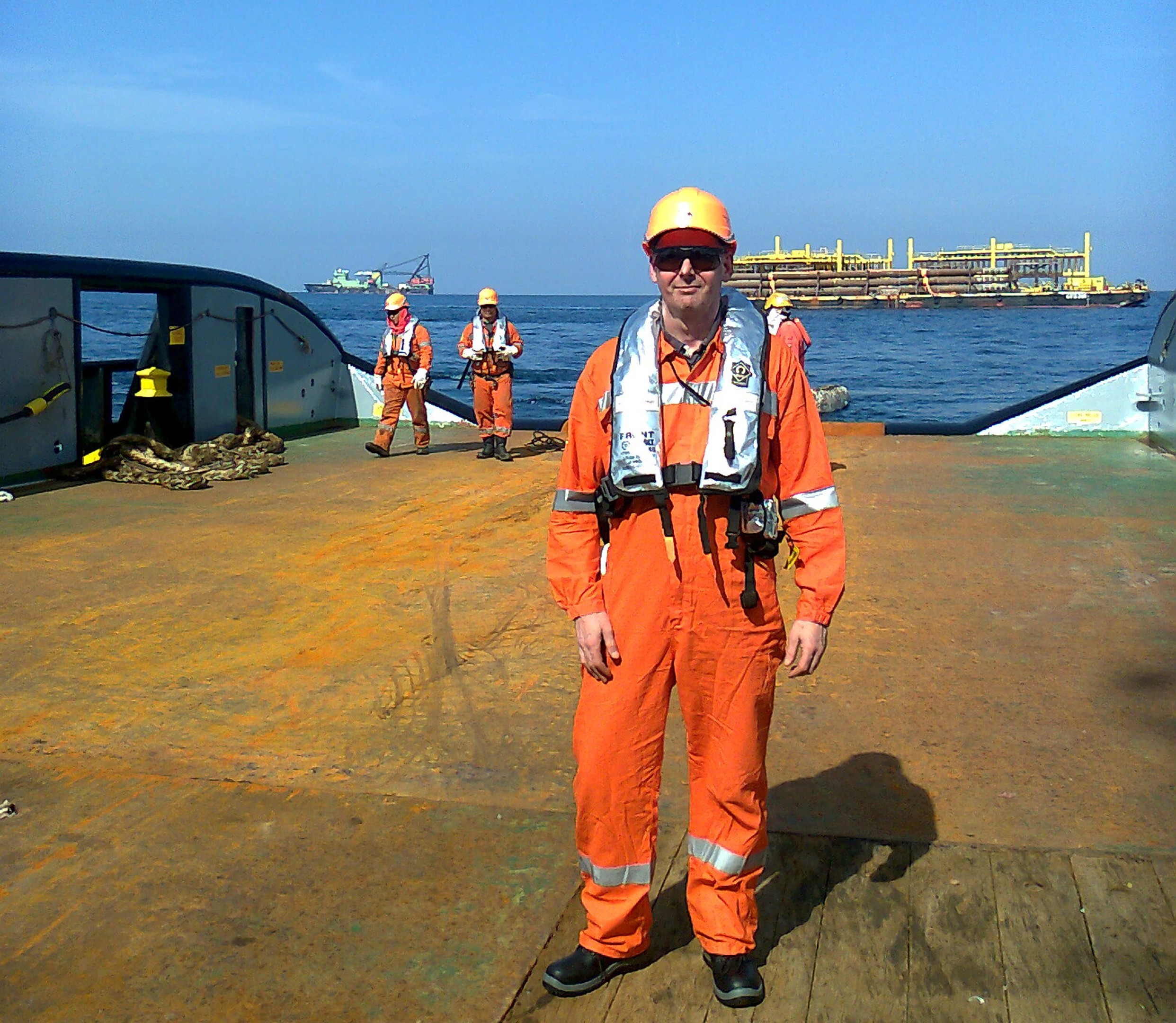Weather-wise meteorologust, Ken McEwan gives an insight into a day in his busy life.
Ken McEwan
Age: 48
Job title: Senior Operational Meteorologist
Company: Met Office
My morning
The day of an offshore weather forecaster is different from the moment you wake up. You live onboard the operating vessel and so when you wake up at 5am you are already at work.
Breakfast is available in the galley from 5.30am, but I usually just eat an apple on the climb up the stairs to the bridge – six levels above the deck – and have a snack mid-morning instead. The bridge is where most operations are co-ordinated and most of the control systems are here as well as the display of motion response and some weather data. I have a little desk space on the bridge where I set up my laptop and work on the forecasts.
I take a walk around the outside of the vessel to assess the current weather conditions and I then note down the wind and sea data recorded on the bridge systems overnight. Throughout my day I repeat this process to keep up-to-date with the current conditions and this is, in many ways, the most important part of the forecast process. Observations of what is happening now are vital to forecasting what will happen in the future.
My colleagues at the Met Office in Aberdeen send regular model data files to my laptop as well as actual weather details from the surrounding area. I study the data along with satellite information and use it as the basis for my forecast.
I apply some calculations to the data and use my meteorological knowledge and forecasting expertise to produce a forecast of wind, sea and weather details and issue it to various personnel onboard and on the shore.
The project I am on at the moment is very sensitive to weather and we need to have five days of favourable conditions and two days to notify the local authorities of the work, so my forecasts have to give details for the next eight days.
After issuing the forecast at around 8.30am I go to the various offices of key personnel to discuss aspects of the forecast that could impact operations and at 9am I brief all concerned personnel at the daily meeting. I give a brief overview of expected conditions and point out anything that may cause concern, such as strong winds.
After the meeting it’s then time for a cup of tea, a banana and sometimes a biscuit or two. The next few hours are spent looking over any new data and keeping an eye on current conditions and preparing for the next forecast issue in the afternoon.
My lunchtime
I break for lunch around 12 noon and I change into my running clothes as I like to pay a visit to the onboard gym, although this is not always possible, as depending on the state of the sea, a moving vessel does not always offer a stable running environment.
My afternoon
After my lunch I grab a quick shower and then head back to the bridge to note down the latest conditions and download the latest data files to my laptop. I compile an updated forecast and issue this around 2pm. I give an updated brief to the captain, construction superintendent, project engineers and the chief mate.
After this I continue to monitor the weather and any incoming data files to make sure the forecast is going to plan, but if the weather is good and I am not needed to give advice for any specific operations, I can take another break around 5.30pm.
My evening
I usually eat my main meal at 6pm. I find that I often have ice-cream for pudding, sometimes two helpings – and that’s why I need to run every day.
I use my free time to read a little and play games on my tablet before going back up to the bridge around 7.30pm to gather more information and compile my last forecast of the day. This is issued around 9pm and I brief everyone once more before returning to my desk to write up my logs of the day’s weather and events.
My working day finishes between 9.30pm and 10pm. I then go to my cabin, sometimes stopping off at the galley for supper. The night shift breakfast is just starting to be served so I have boiled eggs or an omelette before retiring for the night, going to sleep around 11pm.
The onboard life is sometimes hard but everyone works together. Without the banter and camaraderie it could be difficult to get through the long days away from home.
Being an onboard forecaster is a rewarding job, you get to meet new people from all parts of the globe and you are a respected part of a team that delivers results.
Whilst onshore I am based at the Met Office’s Marine Centre of Excellence in Aberdeen and I lead a team of meteorologists providing forecasts for marine and aviation clients, government agencies, the public and the BBC, but I am also part of the offshore forecaster team.
As a deployed forecaster I can be deployed either offshore on a range of vessels or platforms, or to an onshore environment.
My job is to offer guidance on weather conditions that could affect vessel movements and other operations, in particular concerning the construction of offshore installations.
I am usually deployed in the North Sea or Norwegian Sea but I am currently onboard a crane vessel in the Arabian Gulf.
